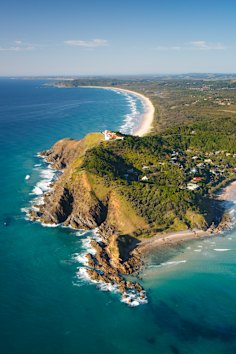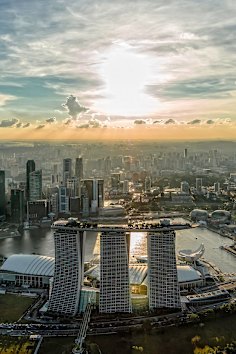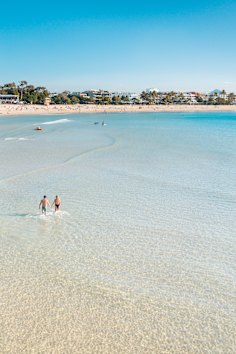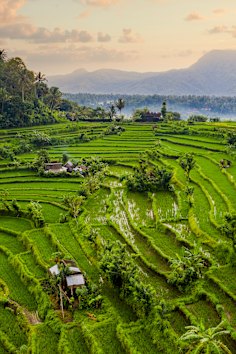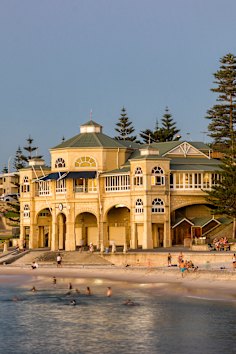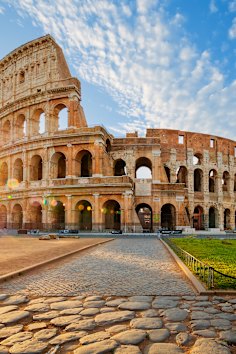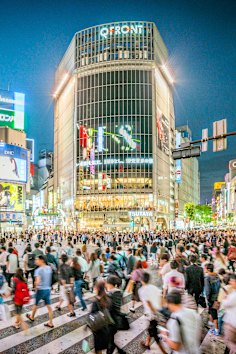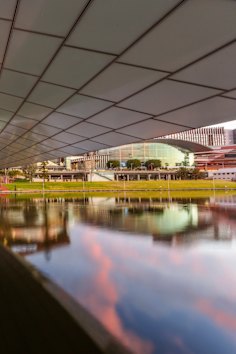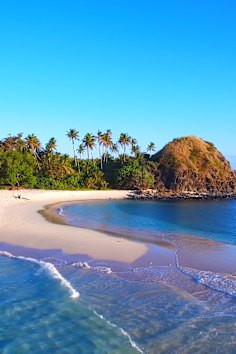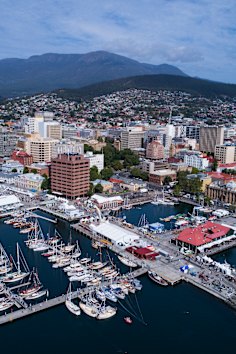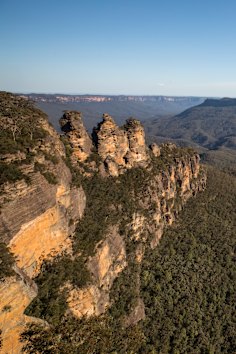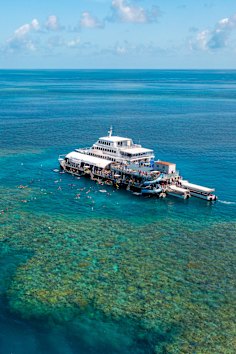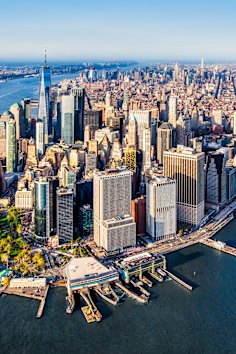By Monique Farmer
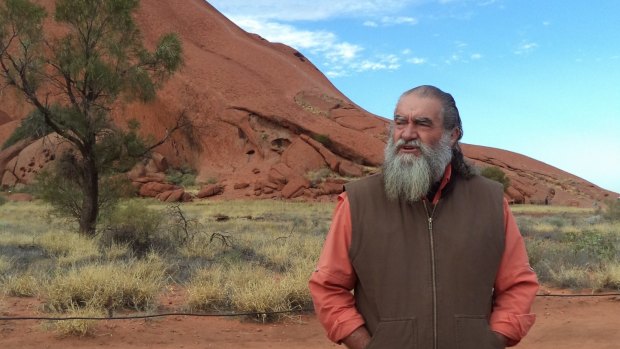
Ned Thompson, guide at Desert Awakenings.Credit: Monique Farmer
The bus bumps along a rough road in the pitch dark. It's impossible to see anything and the overwhelming sensation is the rocking motion which threatens to send us back to sleep. It's 5.30am as we set off on today's adventure which is breakfast in the desert followed by a guided tour around Uluru.
The beauty of visiting Uluru is that you can do so much of it yourself if you choose. You can fly in, hire a car and 13 kilometres later be at one of the many resorts on the outskirts of the national park. Pay for your park entry, $25 per adult for a three-day pass, kids free, and you're away.
The cultural centre at the base of Uluru has no entry fee. You can walk around Uluru at no cost. You can climb it – if that's your thing, more on that later – for free. There are signs around the base explaining some of the main attractions and which sites are too sacred to be photographed. So long as you have your own vehicle to take you from the resort and hotels to the cultural centre, Uluru is ideal for self-touring.
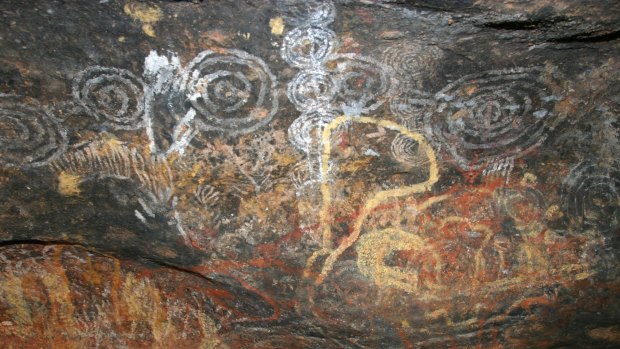
Aboriginal cave paintings at a sacred religious site on Uluru.Credit: Alamy
But if you don't have your own transport, and if you're short on time and want to absorb as much of the outback as quickly as possible, then a tour is a sensible option. And there would be few better than Desert Awakenings
The minute we meet our guide, climbing down from his giant orange bus clutching a clipboard, I know we are in safe hands. Ned Thompson looks the part – khaki-clad, bushy beard, friendly and knowledgeable. His face lights up when he counts how many "tin lids", as he calls them, ae on his bus this morning. He has a great affinity with children, and they instantly warm to him.
There are 14 of us on the tour – mostly Australians plus two American couples. Ned says he is pleased to see an increase in the number of Australians exploring the outback, as we used to be heavily outnumbered by overseas tourists.
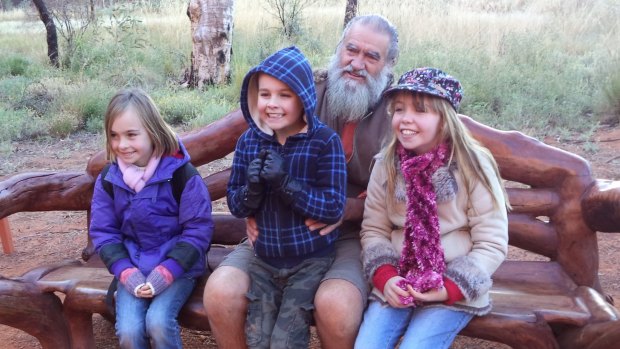
Emily, Sebastian and Jacqueline with Ned Thompson, guide at Desert Awakenings, on the bench graced by royal bottoms.Credit: Monique Farmer
After 20 minutes of bumping through the bush, the bus stops and we follow Ned by torchlight up a dirt road where we see benches around a smoking pit fire.
The distant outline of Uluru is just visible in the pre-dawn light, a good 30 kilometres away.
Ned knows how to keep his clients happy – particularly the small ones. Warm food and drinks are swiftly served, just the thing given it is late June and not far from zero degrees. The kids make for the platter of warm damper dripping with golden syrup (Ned called it "cocky's joy") and eat more than their fair share.
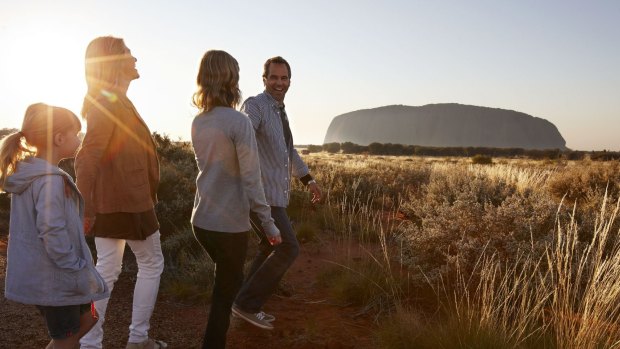
Uluru beckons.
Ned takes orders for bacon and egg rolls, which are cooked by his assistant on a barbecue in a nearby shed. As we fill our stomachs, Ned starts talking about the desert and the landmarks around us, and barely pauses for the next five hours. He is incredibly knowledgeable and one of the most engaging tour guides I've ever had. He ss passionate about his country and determined that visitors leave with their heads full of stories and fact.
His connection with kids comes from his time teaching art and culture to indigenous children in South Australia. He also talks about his own discovery of his culture, growing up half-Aboriginal, half-Irish.
We are all so engrossed in Ned's patter that we barely notice the sunrise is a bit of a fizzer, and certainly not the kaleidoscope of colours we'd seen in the brochures. By 7.20am the sky is light but clouds have hidden the dawn show.
The kids are busy firing questions at Ned. They want to know why there are no kangaroos and emus in sight (because it's a semi-arid desert) and which trees offer bush tucker. They want to know how to spot a goanna's tracks, and when the snakes will come out of hibernation.
Breakfast over, we hop back in the bus and drive to Uluru, where Ned takes us on a circuit to point out the different features and where photos should and shouldn't be taken due to a sacred setting.
We stop to have a closer look at the rock's climbing line, which this morning is closed due to strong winds at the summit but will open later in the day. I haven't realised climbing was still happening – it's allowed but not recommended for both cultural and safety reasons.
As Ned points out, climbing any other landmark in the world – natural or otherwise – would involve safety briefings and guides and harnesses and all manner of OH&S rules. But here, anyone can just walk up with no preparation or checks. Little wonder there have been fatalities.
Ned has strong views on climbing, and the kids were all ears: "If you saw a church, would you climb all over it? No you wouldn't, you'd sit quietly and respectfully inside. Well, this is our church".
From the climbing line, worn white by thousands of feet, we drive around to Mutujulu Waterhole for an information and sensory overload. We learn the stories painted in a cave ("Don't call it rock art," says Ned, "it's storytelling") and sit on the beautifully carved oak seat recently graced by William and Kate's royal bottoms. We learn that the black lines running down the rock face were formed by dried lichen left behind by water courses.
Seeing Uluru from all angles, and listening to an expert, deepens the connection we'd felt since arriving a few days earlier. We are awestruck by the sheer size, and dazzled by the rich red colour that Ned says is actually an iron oxide crust.
I particularly love Uluru's irregular shape, the different contours, giant crevices, and the boulders strewn like puzzle pieces at the base.
The children have their own insights – so engrossed during the lengthy tour that they behaved impeccably.
Emily was struck by the enormity: "When I see the big rock and look up, I feel like the tiniest speck of dirt in the world".
Jacqueline says she liked Uluru "because it's the heart of Australia and it feels like my heart because everyone loves it".
The desert is well and truly awake when we return to the cultural centre for a toilet break. As we snack on a platter of fresh fruit that Ned produces from the bus, right on cue we spot a dingo watching us warily from the scrub. It is a fitting finale to our desert experience.
TRIP NOTES
MORE INFORMATION
Ayersrockresort.com.au; travelnt.com; outbackcycling.com; ulurucameltours.com.au; maruku.com.au (dot painting);
GETTING THERE
The major airlines operate frequent flights between Sydney and Melbourne to Ayers Rock/Uluru Airport..See qantas.com.au; virginaustralia.com; jetstar.com
STAYING THERE
Voyages Resorts offers a range of accommodation, from campgrounds to the five-star Sails in the Desert. Family holiday specials start from $660 per family (two adults and two children) which includes three nights' accommodation at the Outback Pioneer Hotel, buffet breakfast daily, free indigenous activities program and return Ayers Rock Airport transfers. This package is available for booking and travel until June 30. Phone 1300 134 044, see travel@voyages.com.au.
The writer was assisted by Voyages Resorts.
Sign up for the Traveller Deals newsletter
Get exclusive travel deals delivered straight to your inbox. Sign up now.
